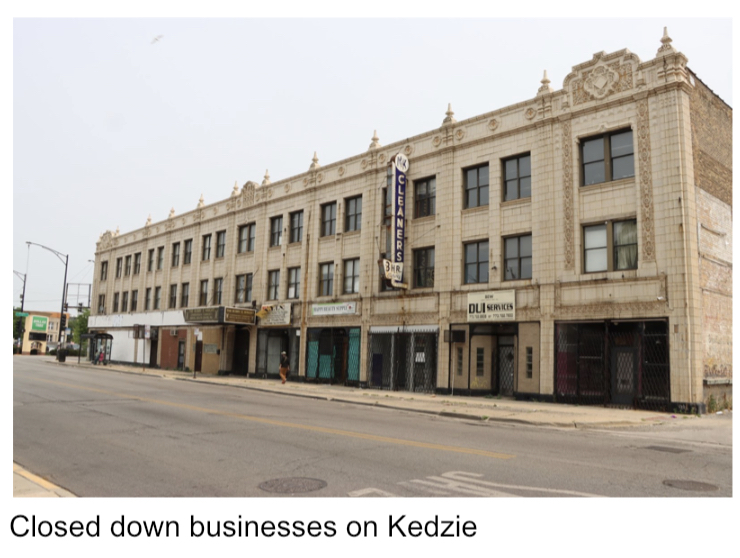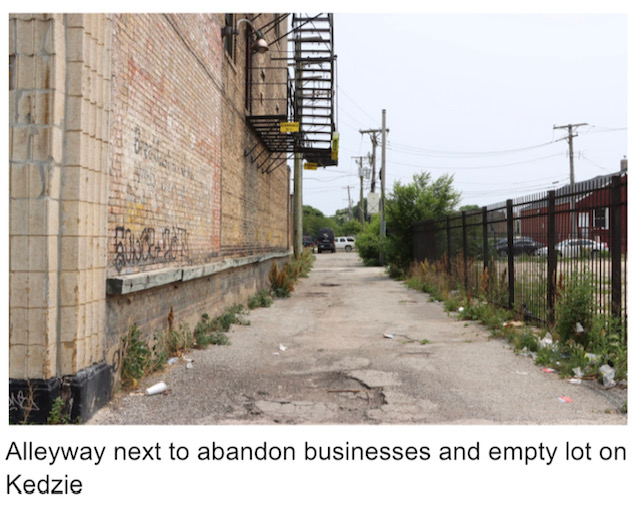













Above are the views of East Garfield Park I get every time I step out of school. Trash and abandonment surround Westinghouse, entrapping its students in hopelessness. For three years, I have been surrounded by the same bleak background every time I look out of my classroom window, with it only getting progressively worse.
These photographs were taken on the same day, June 4th, 2023. The first set of seven pictures is from Logan Square, and the second is from East Garfield Park. Though the distance between these neighborhoods is at most ten minutes, a significant difference in investment is apparent. It is no coincidence that what separates these two communities are the demographics. According to the CMAP, Logan Square is around 52 percent white, while East Garfield Park is roughly 85 percent Black.
The Logan Square Chamber of Commerce has the mission statement of helping the economic growth of Logan Square. One way they achieve this is through the farmer’s market. Meanwhile, first-hand accounts published on ProPublica of people living in East Garfield Park show the abandonment and disinvestment. “All our buildings have been torn down, and we have totally vacant lots,” said Siri Hibbler, head of the Garfield Park Chamber of Commerce, about the challenges of luring new businesses to Madison Street.
The dramatic difference between these two neighborhoods is a recurring problem shown throughout the segregated city of Chicago. According to the Urban Institute, white households receive 4.6 times more market investment than Black households and 2.6 times more than Hispanic, Latino households.
Change must occur to help build up all Chicago communities and not just the primarily white ones. Too often are the needs of minority communities in Chicago sidelined or wholly ignored. As Annette Britton (an East Garfield resident) described to ProPublica, “This was a working-class community with businesses. All of that has been stripped away.”
Improvements must be made to return to that standard and improve on it. For change to happen, the government needs to invest more in these communities and provide aid for those struggling through incentives for small businesses and affordable housing creation.
A house can only stay up if it is structurally sound. If Chicago is the house, then that makes all of its communities, regardless of demographics, a crucial part of its structure and strength.

Esteban Balta is an incoming Senior at George Westinghouse College Prep. He aspires to become a photojournalist.
Originally from the Northeast, Esteban has been a resident of Chicago for three years. He was born in Northern New Jersey and spent his childhood in Central Connecticut.
Esteban is the son of Hugo Balta, Publisher of IL Latino News.




